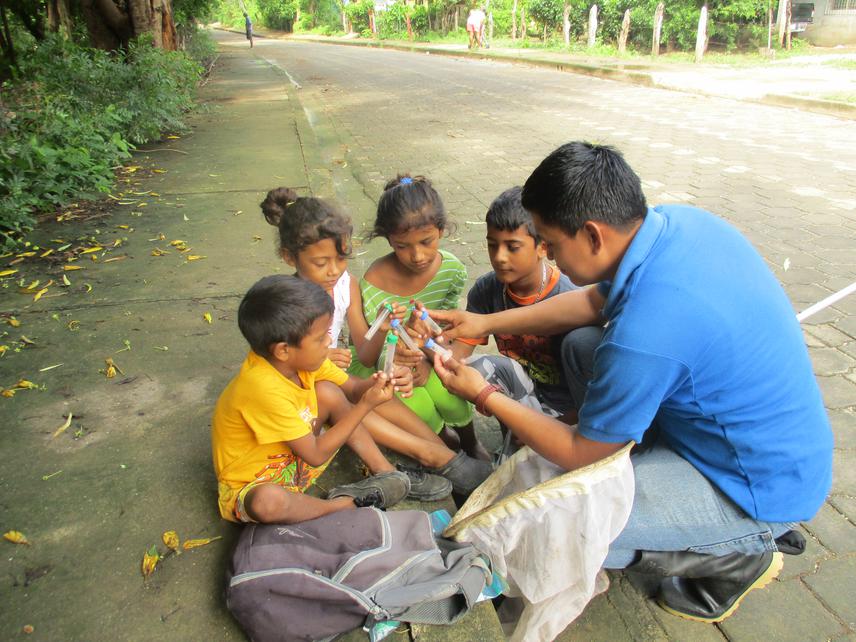Richard Joyce
This project aims to increase our understanding of native bee communities and their floral host associations, and to conserve and strengthen pollinator-plant networks through management and education.

The narrow isthmus between Lake Nicaragua and the Pacific Ocean contains a fragmented yet biodiverse patchwork of tropical dry forest, mangrove, agricultural land, and human communities. As the region continues to face threats such as deforestation and climate change, resilient pollinator-plant networks will help its ecosystems adapt and maintain diversity and ecosystem function. Currently, scientific knowledge about pollinators in Nicaragua is very limited, especially in comparison to nearby countries such as Costa Rica and Panama. This project aims to expand knowledge about bee species assemblages in southwest Nicaragua and to develop educational outreach activities and conservation actions to protect bees and the plants with which they are interdependent.
The project has multiple components:
- We will use several methods (handnetting, pan traps, and orchid bee scent baits) to collect bees at sites in different habitats across Paso del Istmo. A local Nicaraguan technician will perform monthly sampling for one year, and taxonomists from the bee lab at El Colegio de la Frontera Sur in San Cristobal del las Casas, Chiapas, Mexico will assist in identifying specimens. While sampling in the field, we will document which bee species are observed visiting which plant species, as well as observations of bee nesting sites.
An educational outreach component will consist of:
1) the production and distribution of posters illustrating the diversity, importance, and beauty of bees and the plants that they pollinate
2) the implementation of educational programs about bees and pollination with the Junior Ranger program of Paso Pacifico, a conservation NGO working in the region.
Findings from bee sampling will inform conservation actions by the NGO Paso Pacifico in the following ways:
1) identification of possible bee species to serve as indicators,
2) identification of key flowering plants and habitats for bee communities,
3) identification of important flowering tree species to be used in reforestation and agroforestry projects.